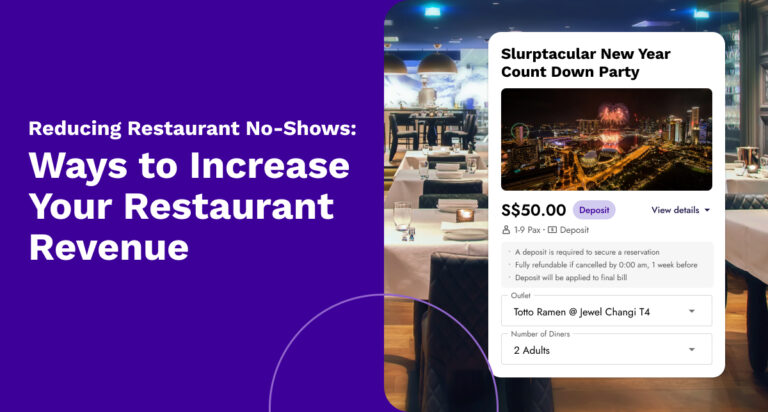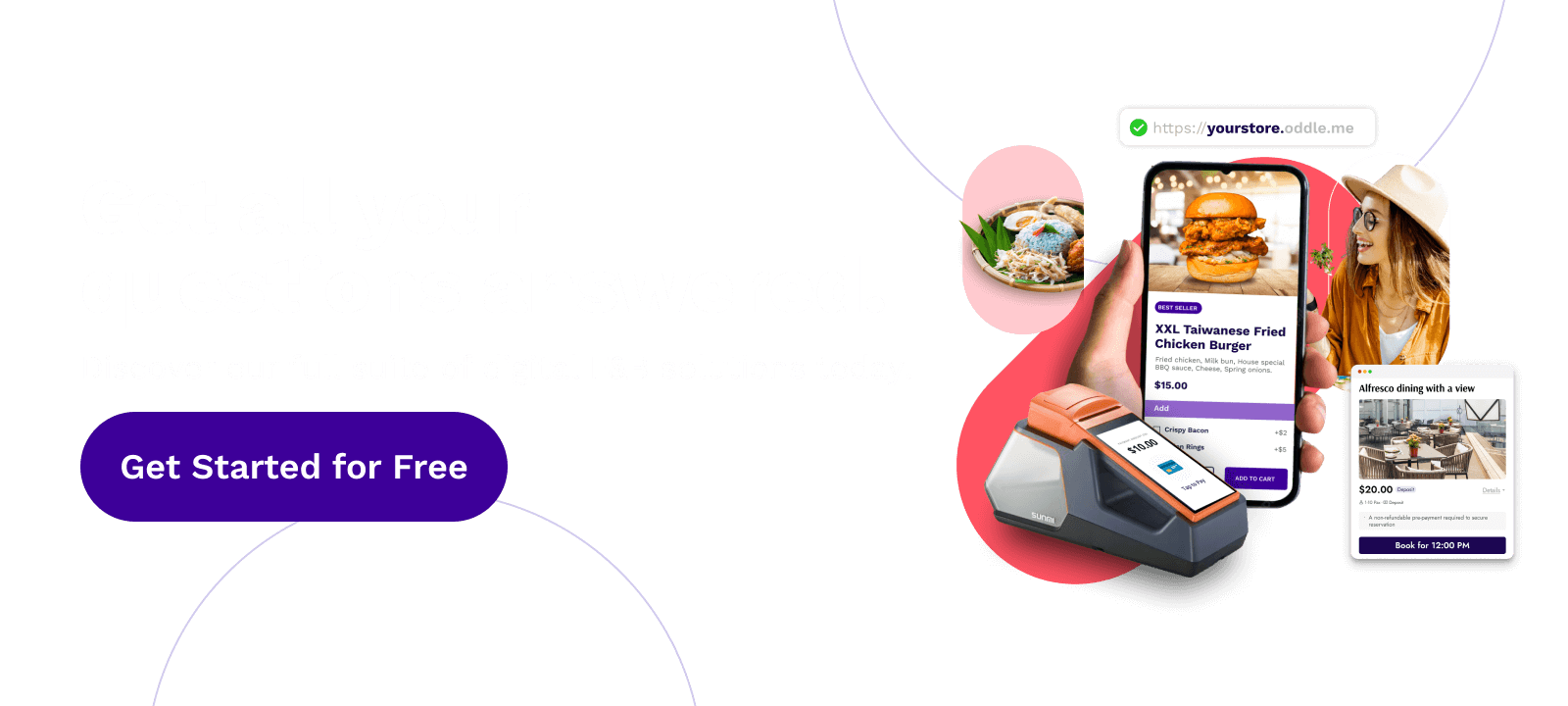Reducing Restaurant No-Shows: Ways to Increase Your Restaurant Revenue
Save on cover charges and subscription fees with Oddle’s
zero-cost reservations system.

Frustrated by restaurant no-shows? You’re not alone. While online reservation bookings are convenient for both restaurants and diners, its accessibility is increasingly turning into a double-edged sword.
To secure their desired slot and ensure the diversity of dining choices for themselves, many customers are making up to two or three restaurant bookings at once.
The result? Restaurants end up having to deal with no-show bookings, otherwise known as the bane of all F&B restaurant businesses.
Oddle’s own CEO, Jonathan Lim, has elaborated on the cost of no-shows in his op-ed for CNA, divulging that “local restaurant partners tell [him] [no-shows and cancellations] can affect up to 30 per cent of their monthly business. Besides lost revenue, restaurants must bear the cost of food preparation and extra manpower, and deal with the frustration of walk-in diners turned away.”
The difficulty in looking for the best reservation system for restaurants
To add salt to the wound, many third-party platforms charge sky-high subscription fees and commissions just to get customers through the door, meaning businesses stand to lose money on two fronts.
It might seem easier to do away with a digital reservations system completely, but it’s a case of throwing the proverbial baby out with the bathwater. The lack of an online reservations platform might hurt more than help your business overall, especially when it comes to dealing with pent-up demand from dine-in crowds in the post-COVID era.
Not all is hopeless, however. Many of the best reservation systems for restaurants work in favour of merchants by offering low-cost plans while improving operational efficiency. But besides saving on costs, there are also several tactics restaurants can use to minimise no-show rates.
Your reservations page might very well be the first impression a customer has of your brand, and a good UI/UX design will spur the customer towards conversion. When choosing a restaurant reservation platform, you might first want to test it out by making bookings with brands that already use the product. Take note of how long it takes to complete a booking—the more seamless the experience, the higher the chance of successful conversion.
How to effectively manage reservations in a restaurant
Sending reservation reminders
Reservation reminders can be done manually (via phone calls), or automatically, using communication APIs like Twilio that send out scheduled text message reminders.
While the manual process is far more tedious, especially when there are large numbers of bookings made, the lack of cost or incentive also means the automated process can only go so far in getting diners to turn up.
Collecting refundable deposits & pre-payments
Implementing a deposit is one of the easiest and most sure-fire ways to encourage customers to honour their reservation. After all, they now have a stake in the game.
Deciding on a deposit amount, however, is a balancing act. Too little and the deposit becomes negligible. Too much, and it turns potential new customers away.
Another tactic restaurants use is therefore to offer exclusive set meals or premium dishes that can be prepaid during reservations. In 2021, The Times surveyed a group of F&B owners, and found that there was a significant uptick in adopting the pre-payment model as a way of dealing with fake restaurant reservations. Furthermore, most of the businesses saw a distinct improvement in their no-show rates.
But it doesn’t have to be one or the other. The best reservation systems for restaurants should be flexible, customisable, and allow its owners to implement both variable deposits and pre-payment packages. Most importantly, the cost of maintaining this reservation system should not outweigh the potential profits earned.
UI/UX also plays a part here in creating a functional platform that’s easy enough for any restaurant operations team to pick up. Your chosen restaurant reservation platform should allow quick access to important details such as guest information, floorplans, and number of covers, especially during peak hours, when time is of the essence.
Reduce no-shows and boost revenue with ‘Tickets’
Oddle Reserve is a free reservations platform created to give merchants control over their organic reservations, all without costly subscription fees or cover charges.
Our zero-cost platform is fully integrated with ‘Reserve with Google’, and facilitates the capture of first-party data, giving merchants a better view of who their customers are.
And just like the best restaurant reservation systems on the market, Oddle Reserve allows F&B owners to implement both variable deposits and pre-payment on exclusive meals. This is done via the ‘Tickets’ function, a nifty tool that allows you to package your deposit fees as first-class experiences for diners.
For example, if your restaurant has an alfresco dining area with a view, you might want to implement a $10 deposit on reservations for this area, especially during peak hours. During off-peak periods, however, you might want to encourage greater sales by offering discounted set meals that require pre-payment.
‘Tickets’ has a per-usage fee (3.4%, inclusive of payment gateway charges) that is only activated when tickets are sold. By tying our success to yours, we have a greater impetus to help you boost your sales, and we do this through managed marketing efforts that increase the online visibility of your brand.
In Summary
Restaurant no-shows risk damaging your profits, but implementing deposits and pre-payments on third-party platforms tends to be a costly affair, what with sky-high subscription fees and cover charges.
In its bid to always put restaurants first, Oddle aims to help F&B brands navigate this minefield with its zero-cost reservations platform and low-cost ‘Tickets’ function.
Want to learn more? Follow this link to get all your questions answered, or read our in-depth guide to managing reservation deposits, with targeted solutions for real-world scenarios.
Tan Xin Yue
Xin Yue’s experience in Digital Marketing & Business Development has cultivated her awareness of F&B industry trends and provided her with valuable insight on the best practices for content marketing in today’s shifting consumer landscape.

